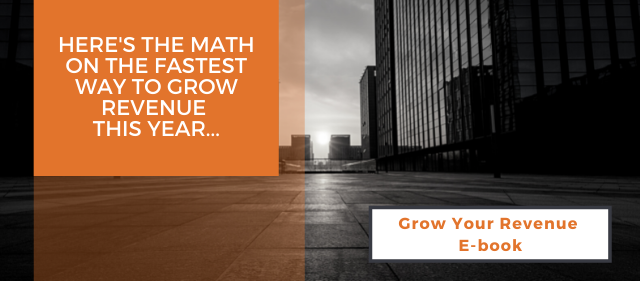SHARE
What Site Selectors Look For On Your Economic Development Website
The biggest mistake your economic development website (and subsequent communications) can make...is to sound like everyone else working in economic development.
Site selectors and investors (and retained businesses) don’t have time to guess at who you are nor what support you offer. You have to spell it out for them. American economic development strategist Janet Ady writes that every community should “know what type of businesses would place the greatest value on your particular mix of assets.”
Don't forget the #1 job of your economic development website. It’s to reassure site selectors and potential investors that they are in the right place. If you’re generically good for everyone - you’re good to no one.
Here’s How Your Website Can Give Businesses, Investors & Site Selectors What They Need:
1. Define your Unique Selling Proposition.
Economic Developers who take the time to go through a comprehensive strategic planning process will uncover one major thing - and you won’t know how to fix your website without it. That’s your unique selling proposition in comparison to other companies. Yes, you have to get approval and go through an RFP process typically (which is a pain) to get a strategic plan. But if you’re simply a small municipality, or you just can’t get consensus, economic developers can create a Where, Now, How one page business plan so they can start the process of knowing where they fit into the marketplace. (Perhaps that process and uncovering what you don’t know might help you get council buy-in to do a more thorough strategic plan for the next fiscal year). With all the 25+ Eastern Ontario Municipal websites Tangible Words has been asked to comment on through our Website Content Audit report and other copywriting services if we’re feeling sick of the “great place to live and work” - don’t you think Site Selectors are too? And you're not just trying to attract Site Selectors to your economic region. You want to be in direct line of sight with the companies themselves. In particular, neighbours in the next municipality or regional companies who you’d love to see expand (even relocate) into your area, providing jobs and buying services from your local supply chain.
2. Use a Human Touch With Site Selectors, Investors and Your Retained Businesses.
We all search and use the internet in a similar way. If you don’t provide sufficient information on your website, people draw the wrong conclusions about you. You need to give enough information to make them feel like they’re in the right place when they come to your website. They need to recognize themselves in your examples. A critical piece of that strategic planning process is to know who does well in your community. You have to be able to prove that you’re great at helping these companies.
3. Use A Website Audit To Measure Your Performance.
A website audit shows you where you're doing well and how you can improve your content and design to better attract investors and businesses. With Tangible Words, your economic development website will be assessed against 9-12 criteria. It has two parts. The first part is a customised report you can share with your team to discuss the good, the bad and the unknown about your website. The second part of the audit is a 30-minute consultation with our Principal Copywriter so you can talk in-depth, and ask any questions about your site, one-on-one.
Is Your Economic Development Website Answering These Questions for Site Selectors?
- Does your website provide compelling data to your ideal investor? Using the Inbound Marketing methodology, it’s important to map out a vivid representation of your ideal investor. To help with this process, verbalize their pain-points and articulate their problems so when your investor lands on your website, they have reason to know, like and trust your advice.
- Are you giving them examples of who does well there? It’s great to tell a story about a company who is doing a really good job and your residents love to read about businesses in the community. But if you’re trying to attract investment, make sure your Success Stories focus on telling the story of who else you want to attract. Think laterally, too. If there is a really good service provider who would be an asset to another company, think about recruiting the customer or vertical companies they need to grow.
- Are you telling them what’s unique about your community so they can see why they’d be a good fit with you? Keep in mind, companies who would not do well in your community - called a negative persona or profile - are just as valuable to you and the reader. By letting people know the specifics of why they would or would not do well early in the process you are better able to focus on the people who are more likely to “close” and choose you. Even more to the point, you want to attract companies to your region who are delighted to be in your community thus becoming ambassadors for your community. That creates the valuable Win Win people expect of a sales process. So make it clear who does well in such a way that even those who don’t do well will see themselves in your content.
- Do you reassure investors of the aftercare support you offer? Use your content to address the long term needs of all your target audiences: investors, site selectors and local businesses. You have programs in place to attract and retain businesses so make sure you let it be known exactly how comprehensive your support is. Make sure they know your economic development office will take care of them long term.
Do your investors know how good you really are?
How is your Economic Development Organization doing with business content and communication essentials?
Topics
- Content Creation (297)
- Growth-Driven Design Websites (167)
- Inbound Marketing (145)
- Sales Growth (133)
- Tangible Words (111)
- Search Engine Optimization (85)
- Social Media Marketing (83)
- Hubspot (76)
- Blogging for Business (75)
- Economic Development (64)
- Events & Training (60)
- Company Growth Podcast (49)
- Manufacturing (47)
- Tourism (46)
- Email Marketing (42)
- Case Stories (40)
- Testimonials & Client Feedback (36)
- Education and SaaS (23)
- Google (21)
- Careers (19)
- Inbound Marketing Agency (19)
- Cool Companies (18)
- FAQ (16)
- Alysha Dominico (13)
- Associations (7)
- Food and Beverage (7)
TW Blog Sign-Up
Learn more about how to grow your business and improve your sales team process.




